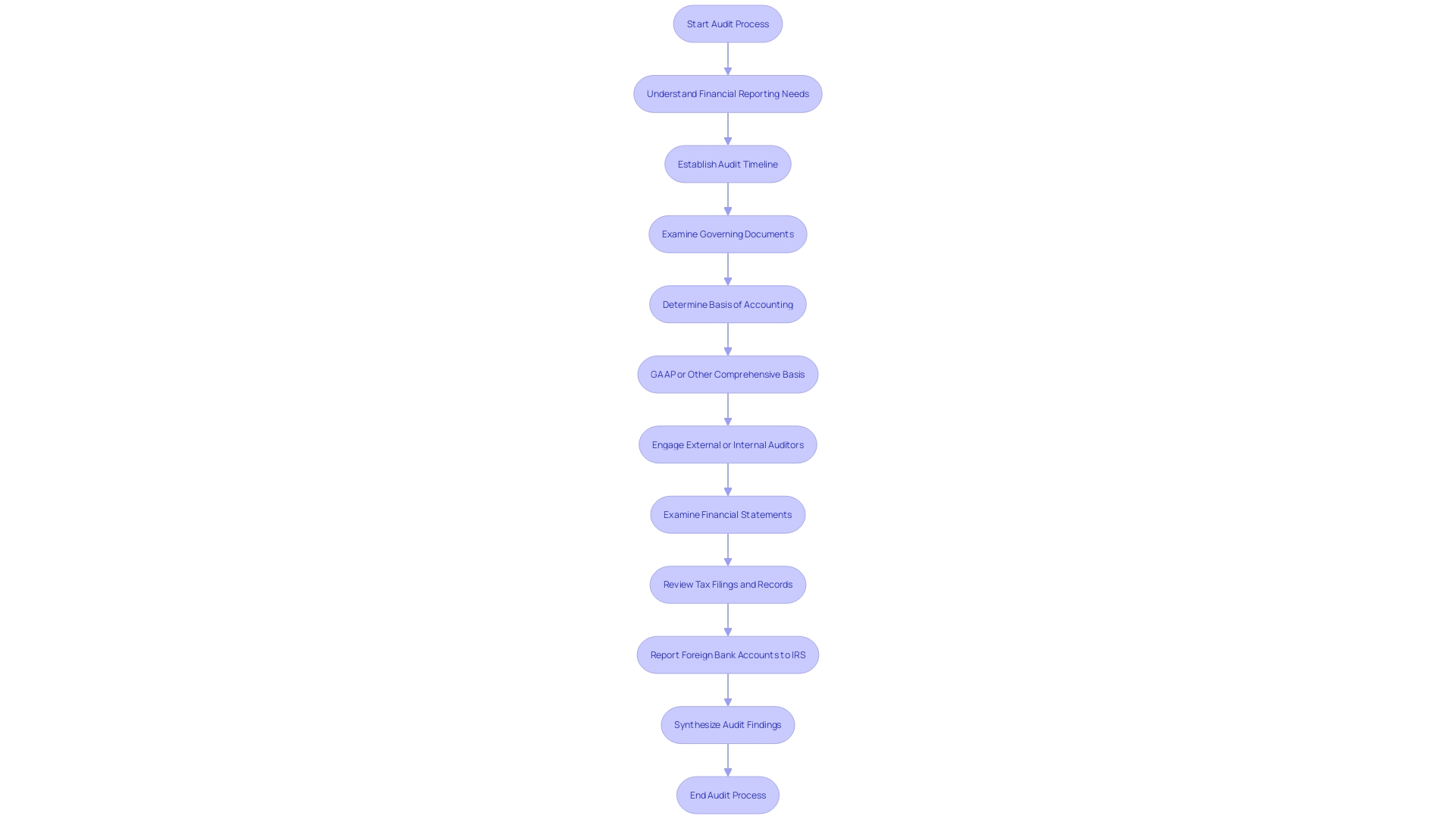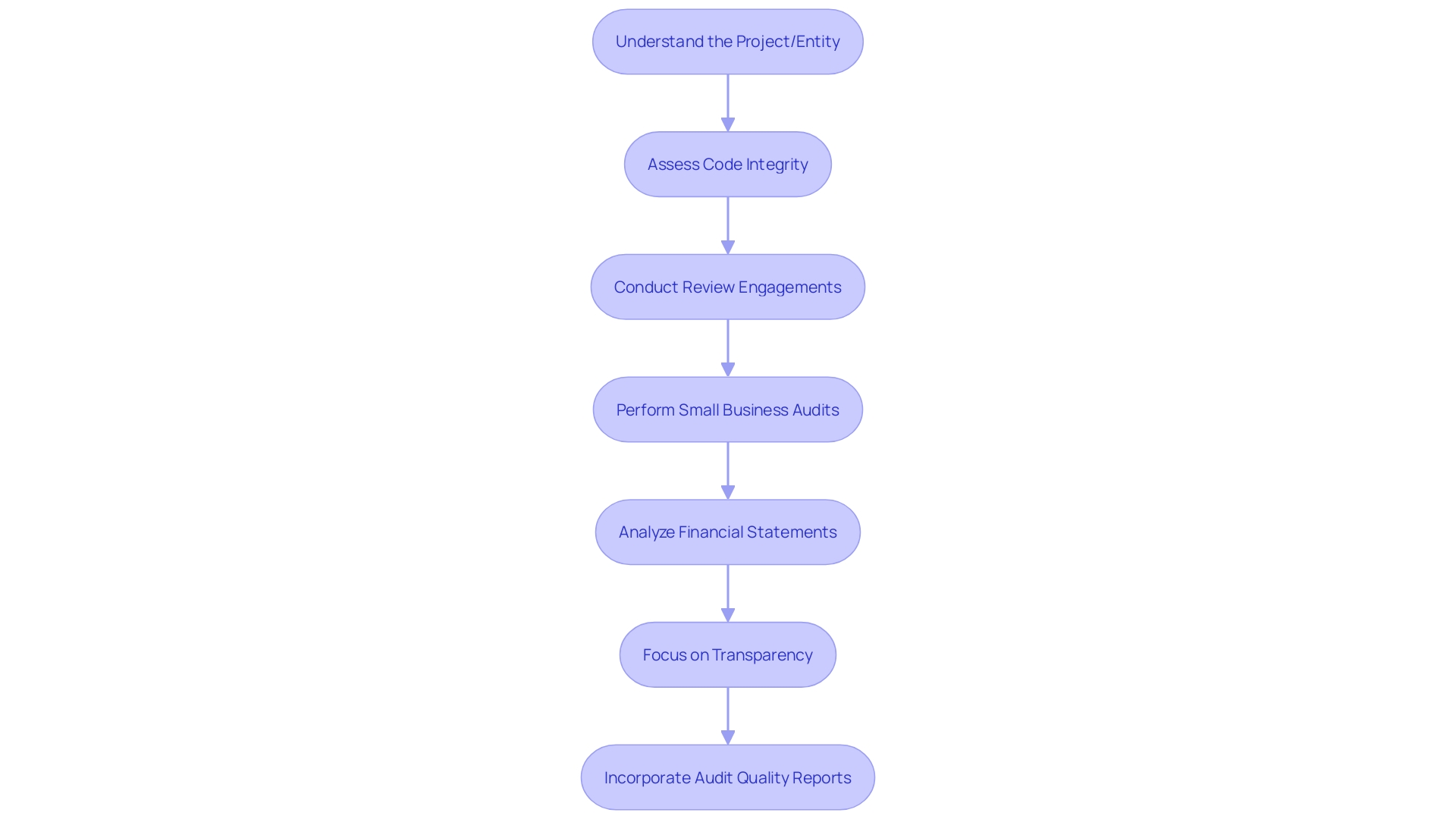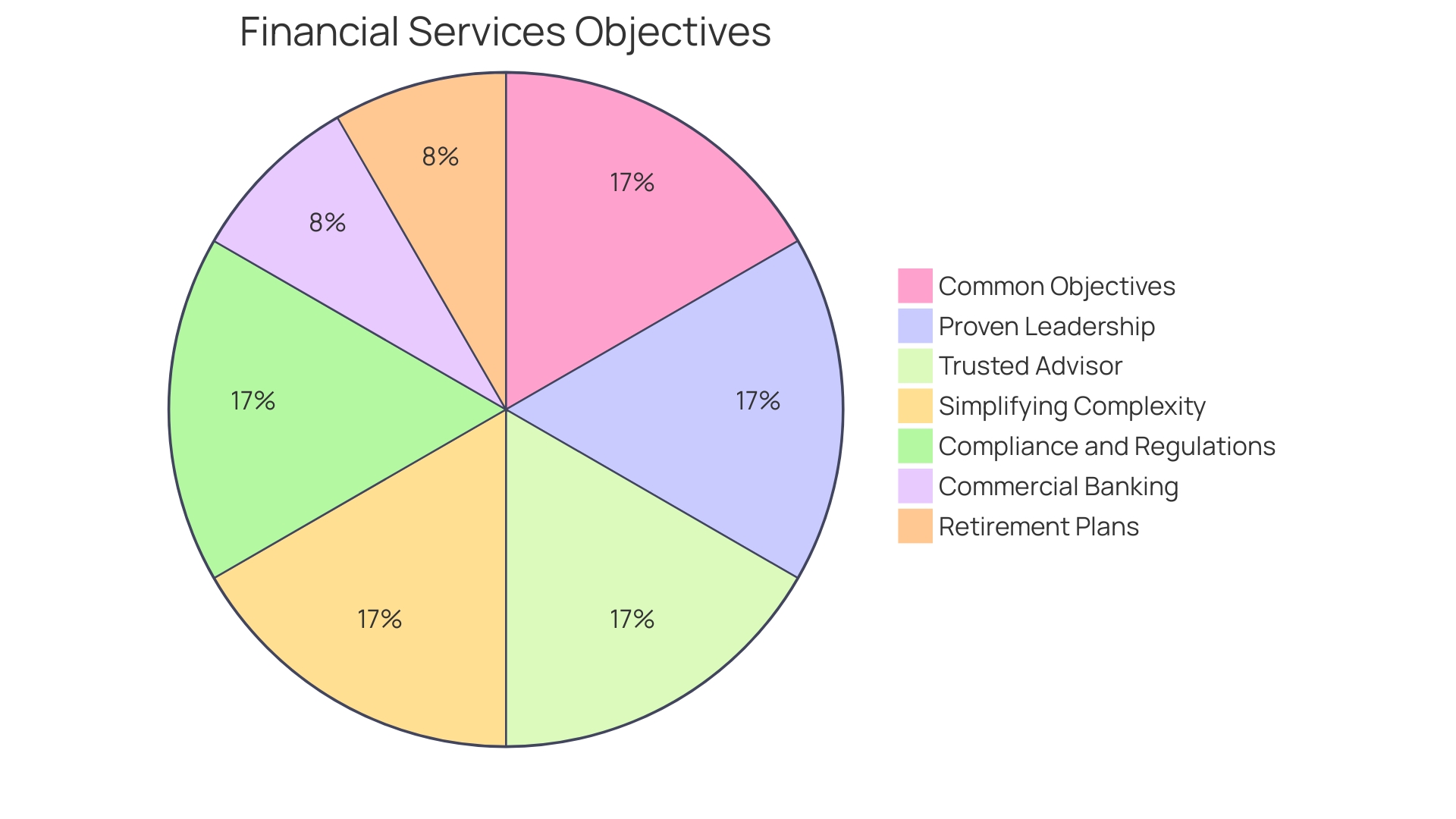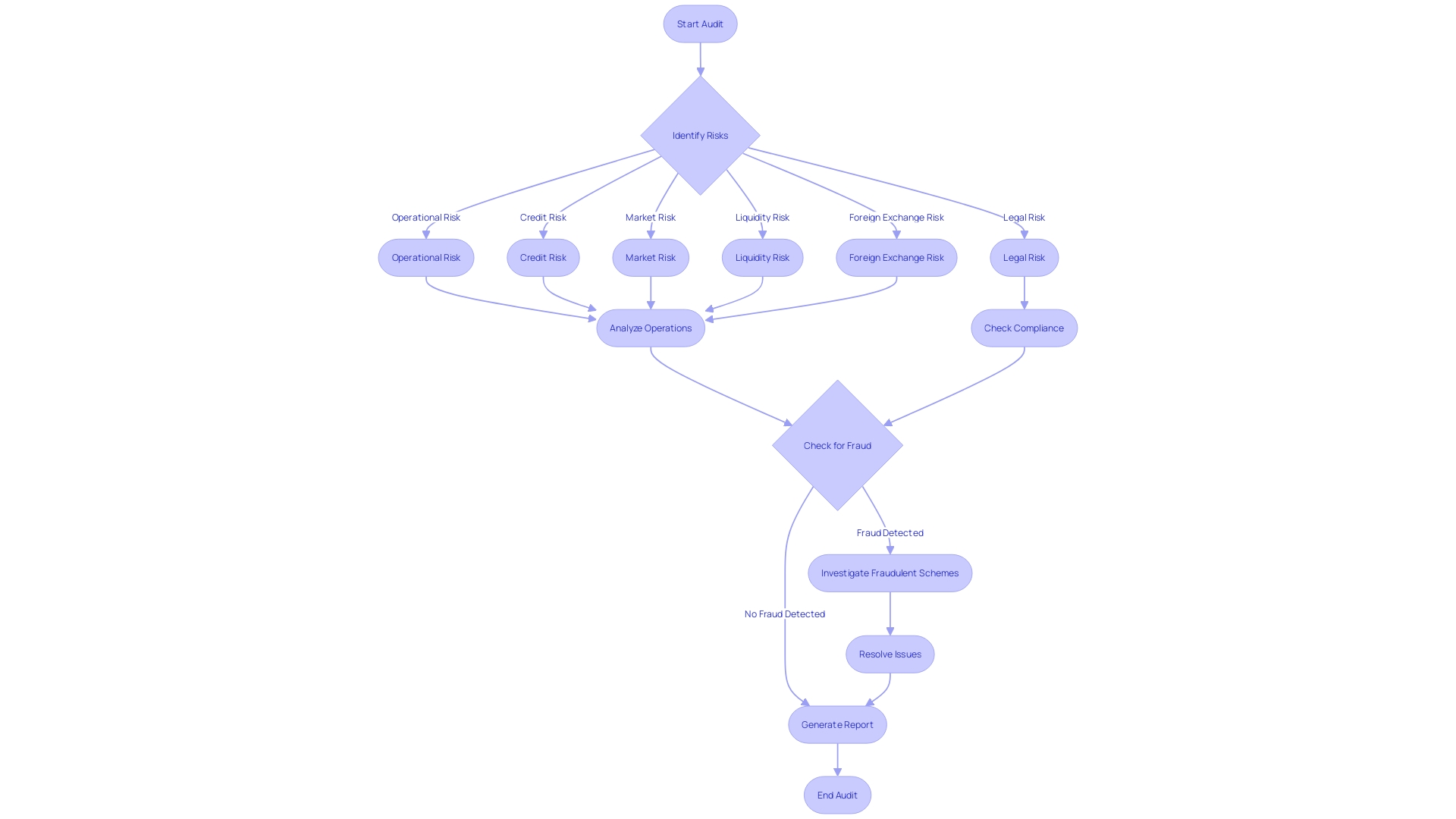Introduction
Financial audits are an essential tool for organizations to maintain financial integrity and transparency. They not only ensure accuracy and compliance with accounting standards but also build trust with stakeholders. This article explores the different types of financial audits, the importance of preparation, the process of performing an audit, finalizing the audit report, and best practices for efficient and effective audits.
Additionally, it discusses the benefits of financial audits, common challenges faced, and solutions to overcome them. By embracing comprehensive review, selective automation, and expertise in data analysis, organizations can uphold the integrity of their financial reports and protect the interests of their investors.
Understanding the Types of Financial Audits
Financial audits are multi-faceted and play an essential role in maintaining the integrity and transparency of an organization's financial reporting. They not only ensure accuracy and compliance with accounting standards but also serve to foster trust between a business and its stakeholders. The strategic importance of financial audits becomes apparent when considering the variety of audits available, each designed to meet specific organizational needs.
Internal audits, for instance, are performed by an organization's own audit team. They focus on evaluating the effectiveness of internal controls, policies, and procedures, aiming to pinpoint areas needing improvement while verifying adherence to internal standards. Such was the case with Glow, where a closer inspection of audit documents exposed fraudulent activity through the clever use of satellite imagery.
In the realm of InfoSec and Cybersecurity, audits are indispensable for safeguarding sensitive information. They systematically examine an organization's information systems, processes, and controls to evaluate the robustness of security measures, unearth vulnerabilities, and certify compliance with relevant policies and standards. This is mirrored in the world of software development, where responsible disclosure is a practice that ensures critical bugs are confidentially reported to developers first, allowing for patches to be deployed to protect users.
Furthermore, audits are not only crucial for legitimate businesses but also for those with less savory intentions. Questionable enterprises might seek to exploit the credibility of trusted third parties to gain unwarranted validation. As evidenced by the recent SAP scandal, where bribery charges led to a substantial settlement, the repercussions of bypassing ethical audit practices can be severe.
For small businesses, an audit examines tax filings and financial records to ensure accuracy. This process involves scrutiny by either external or internal auditors and extends to reporting requirements such as foreign bank accounts to the IRS. Audits thus serve as a preventive measure against financial misrepresentation.
As the landscape of finance and technology evolves, so does the scope of audits. In the tech and crypto sectors, audits may shift focus from financials to the underlying blockchain and smart contract technologies. Prospective investors can often find audit reports on project websites or platforms like CoinMarketCap, which provide audit services for crypto projects.
In summary, financial audits are multifaceted tools that cater to an array of auditing needs—be it for internal review, compliance, or security. They are critical for ensuring the integrity, confidentiality, and availability of information, building trust with stakeholders, and upholding a company's reputation in the marketplace.
Preparing for a Financial Audit
Thorough preparation underpins the efficacy of a financial audit. It commences with the precise organization of financial statements, encompassing balance sheets, income statements, and cash flow statements, which are indispensable for evaluating a company's profitability, liquidity, and solvency. Financial records should be meticulously gathered and reviewed to ensure accuracy and compliance with regulatory directives.
To streamline the audit process, it's essential to comprehend the financial reporting needs of the entity. Assessing factors such as the reporting deadline and the accounting basis—be it the Generally Accepted Accounting Principles (GAAP) or an alternative like the income tax basis—is foundational. This preparatory step, informed by the entity's governing documents, facilitates a smooth audit experience.
Moreover, the role of financial analysts in the audit preparation cannot be overstated. Their expertise in parsing through financial data and market trends equips businesses with the foresight needed to navigate potential fiscal challenges. Through diligent analysis and forecasting, analysts play a crucial part in fortifying the organization's readiness for an audit.
In the realm of financial public relations, transparency remains a linchpin in cultivating trust. Openly sharing financial information not only demonstrates a commitment to ethical standards but also reinforces stakeholder confidence. This approach, coupled with a deep understanding of the audience's interests and behaviors, ensures that the preparation for a financial audit is communicated effectively and resonates with the intended audience.
As the digital landscape evolves, it's imperative to remain attuned to conversations across social media and online forums. Such engagement offers real-time insights into audience priorities, informing the strategic dissemination of financial information and reinforcing the organization’s public relations efforts.
Performing the Financial Audit
Embarking on a financial audit requires systematic effort and meticulous attention to detail. The initial phase involves audit planning and risk assessment, where an expansive view of the project's structure is taken to evaluate its originality and understand the fundamental functions most frequently utilized. This is akin to a bird's-eye perspective, crucial for identifying any forks or alterations in the protocol that may signal potential risks or areas needing closer scrutiny.
Subsequently, the focus shifts to gathering evidence and testing controls. Here, auditors dive into financial statements, exploring them with the precision of a financial analyst to ensure accuracy and compliance. This step is similar to searching for 'low-hanging fruit,' where common issues are more likely to surface and can be rapidly addressed.
The process then advances to substantive testing and executing audit procedures. Like a well-oiled machine, financial analysts forecast future performance by dissecting balance sheets, income statements, and cash flow statements to judge profitability, liquidity, and solvency. This stage is essential for painting a comprehensive picture of the company's financial health.
Lastly, evaluating internal controls is equivalent to conducting a thorough examination of a small business's tax filings and financial records. It ensures everything is accurate and up-to-date, akin to a small business audit where books and statements are examined by auditors—whether external or internal—to maintain integrity and prevent discrepancies. Throughout this process, auditors also pay attention to the interplay of key financial statements, considering the insights from recent audit quality reports that emphasize the importance of pre-issuance reviews and the enhancement of supervision to bolster audit quality.
Such diligence in monitoring progress and execution ensures that the audit lifecycle is not only compliant but also reflective of the highest standards of financial accuracy and transparency.

Finalizing the Audit Report
Completing a financial audit culminates in the critical task of presenting findings in a comprehensive audit report. This document encapsulates the auditor's professional judgment, summarizes key issues, and provides actionable recommendations. A compelling audit report consists of several pivotal elements that are indispensable for stakeholders to understand the security and compliance posture of the assessed entity.
Firstly, the auditor's opinion is a cornerstone of the report, reflecting the auditor's independent and objective assessment of the entity's financial statements and operations. It is the auditor's professional viewpoint on whether the financial statements are free of material misstatement, whether due to fraud or error, and if they are presented fairly in accordance with applicable accounting standards.
The findings section follows, detailing the specific issues uncovered during the audit. This segment should offer a clear and concise description of any identified vulnerabilities, control weaknesses, or non-compliance with regulations and standards. For instance, in the realm of cybersecurity audits, issues might range from inadequate security measures to potential breaches in data protection.
Recommendations are then presented to address these findings. These suggestions are crucial for guiding the entity on how to rectify issues and enhance their procedures and controls. The recommendations should be practical, feasible, and tailored to the organization's context, considering its size, complexity, and the nature of its operations.
Moreover, it's essential for the report to disclose any limitations of the audit scope, such as areas not covered or constraints encountered during the assessment. This transparency ensures readers understand the extent to which they can rely on the report's conclusions.
To illustrate the thoroughness of an audit, the report may include a summary of the audit process, such as an overview of the evaluated systems, the methodologies used, and the extent of automated versus manual testing. For example, the use of automated tools in detecting common issues ensures a baseline level of scrutiny, while manual testing by experts can delve deeper into complex, nuanced areas.
In the rapidly evolving landscape of technology, particularly with emergent technologies like cryptographic tokens and smart contracts, the audit report should caution stakeholders regarding the inherent technical risks and uncertainties. It should make clear that the report is not an endorsement of the audited entity's business model or legal compliance, nor does it guarantee the security of any project.
Providing a holistic and informative audit report is essential for stakeholders to make informed decisions. By focusing on the auditor's opinion, detailing findings with clarity, and offering well-founded recommendations, the audit report becomes an invaluable tool for enhancing security, compliance, and overall organizational resilience.

Best Practices for Efficient and Effective Audits
Optimizing financial audits is crucial for ensuring accuracy and accountability within an organization's financial practices. By examining a company's financial records thoroughly, auditors can validate the integrity of financial statements, ensuring they reflect true financial performance and compliance with relevant regulations.
A comprehensive approach to auditing begins with understanding the project or entity in question. For instance, when reviewing an options-based market, it's vital to assess whether the code is original or a fork, and if it's a fork, whether the code has been modified. The top-level functions called by users can provide significant insights into the system's operations and potential areas of financial risk.
Review engagements are another layer of the financial scrutiny process. They do not dive as deep as a full audit but still provide limited assurance that financial statements align with the applicable financial reporting framework. This is accomplished without the exhaustive procedures typically associated with audits, such as detailed inspection of source documents.
A Small Business Audit focuses on the precision of tax filings and financial records to confirm their accuracy. Both external and internal auditors may perform these evaluations, looking into all aspects, including foreign bank account reporting to the IRS. The objective is not just to fulfill regulatory requirements but also to ensure that the financial health of the business is properly represented.
Financial statements, such as the Income Statement, are pivotal in illustrating a company's profitability over a specific period. This statement includes revenues and expenses, culminating in the net income, which is a key indicator of financial health. It's essential for businesses to understand the interplay between various financial statements and how they report on the company's financial status.
In today's digital landscape, it is imperative for companies to focus on transparency and build trust with their audience. Openly sharing information like financial reports can foster this trust, positioning the organization as an ethical entity. Understanding the audience's priorities through active engagement on social media and forums can also enhance the effectiveness of financial communication.
Lastly, a review of audit quality reports, such as the FY23 Audit Quality Report from January 2024, reveals efforts to standardize, centralize, and automate key areas of the audit process. This shift towards conducting more work earlier in the audit cycle allows for comprehensive pre-issuance reviews and improved audit quality, as evidenced by the commitment to cover 100% of public audits with pre-issuance reviews.
Incorporating these practices into financial audits can lead to enhanced accuracy, reliability, and insights into the financial workings of a business, ultimately supporting better financial decision-making and reporting.

Benefits of Financial Audits
Regular financial audits are a cornerstone of sound financial management, serving as a tool to ensure accuracy and integrity in an organization's financial statements. They are not just about compliance; they are an opportunity to uncover insights that can drive strategic decisions and improve business health. With financial statement fraud schemes growing in sophistication, audits have become increasingly important in detecting complex schemes that could be concealed within regular reporting processes.
The complexity and volume of today's financial data mean that traditional analysis methods may no longer suffice. Detailed examinations of financial statements can reveal patterns and anomalies that might otherwise go unnoticed. But beyond mere fraud detection, audits can provide a clearer picture of financial health, akin to the comprehensive financial views sought by users of budgeting systems like YNAB, which requires making a plan for every dollar and promotes transparency.
For specialized industries or firms like De Grandpré Chait, grappling with novel challenges such as cryptocurrency transactions, the role of an audit can extend to providing assurances that complex and unconventional transactions are recorded and reported accurately, thereby fostering trust with clients and stakeholders.
Moreover, a well-conducted audit can lead to operational improvements. By evaluating the efficiency of operations and supply chain processes, businesses can identify areas that require attention and streamline them to avoid disruptions. In the context of financial performance, an audit can validate whether a business has met its financial targets, considering critical factors like revenue growth, profit margins, and cost management.
Ultimately, an audit's enhanced credibility can prove invaluable in the eyes of investors, lenders, and other stakeholders. By demonstrating a commitment to transparency and accuracy, organizations can establish a foundation of trust that is critical for long-term relationships and the ability to secure future capital.

Common Challenges and Solutions in Financial Audits
Financial audits are a crucial aspect of maintaining the integrity of an organization's financial reporting. They serve as a foundation for regulatory compliance and investor confidence. As such, it is vital to acknowledge the common impediments encountered during such audits and to strategize effectively to surmount them.
Fraudulent financial schemes pose a significant challenge due to their evolving sophistication. Fraudsters, armed with detailed knowledge of company operations and controls, are capable of crafting schemes deeply embedded within regular reporting processes, rendering them nearly imperceptible. Furthermore, the sheer volume and complexity of financial data generated by modern businesses can obstruct the detection of anomalies.
Financial statements replete with intricate transactions, subsidiaries, and varying accounting treatments require advanced analytical tools beyond the scope of traditional methods.
To tackle these challenges, auditors could adopt a strategic approach similar to the one used in analyzing complex information systems. Initially, a comprehensive overview of the audit subject is essential, akin to understanding a project’s structure in cybersecurity. This involves determining the originality of the code, or in the case of financial audits, the authenticity of the financial records.
The next step involves the automation of key processes. This starts with selecting high-impact areas that offer the most significant insights. Subsequently, leveraging connectors or native features to import necessary data into analytical platforms, like Snowflake, is crucial.
Finally, the critical phase of designing and executing queries to visualize and analyze the data ensues, with emphasis on involving those who possess an in-depth understanding of the data and associated risks.
Statistics from expert resources underline the importance of dynamic and multifaceted audits that provide actionable intelligence. However, increased scrutiny by regulatory bodies, coupled with a dwindling pool of seasoned professionals, has led to a perfect storm where demand for reliable financial information escalates as the supply of experts diminishes.
In the realm of InfoSec, internal audits are conducted to evaluate the efficacy of controls and compliance with standards, suggesting a parallel in financial auditing where internal audits can serve to identify areas of improvement and reinforce financial probity.
Audit Committees and auditors play a pivotal role in governance by ensuring that finances are managed correctly and that reported expenditures align with actual spending. This instills investor trust in financial statements and confirms that the company abides by effective controls and standards.
In essence, confronting financial audit challenges necessitates a blend of comprehensive review, selective automation, and expertise in data analysis. It is through these measures that organizations can continue to uphold the integrity of their financial reports, ensure compliance, and protect the interests of their investors.

Conclusion
Financial audits are crucial for organizations to maintain integrity, compliance, and transparency in their financial reporting. This article has covered various aspects of financial audits, including the different types, the importance of preparation, the audit process, finalizing the audit report, and best practices for efficient and effective audits.
Understanding the types of financial audits is vital, as they cater to specific organizational needs. Internal audits focus on evaluating internal controls, InfoSec audits safeguard sensitive information, and small business audits examine tax filings and financial records.
Thorough preparation sets the foundation for a successful audit. Organizing financial statements, understanding reporting needs, and leveraging financial analysts' expertise contribute to a smooth audit experience. Transparency and engagement with stakeholders further enhance the preparation process.
Performing the financial audit involves systematic effort and attention to detail. This includes audit planning, gathering evidence, testing controls, and evaluating internal controls. By following these steps, auditors ensure compliance and maintain the highest standards of financial accuracy and transparency.
Finalizing the audit report is a critical task that consolidates the auditor's professional judgment, key findings, and recommendations. The report should provide an independent assessment of the financial statements, detail specific issues, offer practical recommendations, and disclose any limitations. It should also address technical risks and uncertainties.
To optimize audits, organizations should adopt best practices such as understanding the project or entity, conducting review engagements, focusing on financial statements, promoting transparency, and staying updated on audit quality reports. These practices enhance accuracy, reliability, and insights into financial workings, supporting better decision-making and reporting.
Financial audits offer numerous benefits, including fraud detection, strategic insights, trust-building with stakeholders, operational improvements, and enhanced credibility with investors and lenders.
Challenges in financial audits, such as fraudulent schemes and complex financial data, can be overcome by adopting a strategic approach, automating key processes, and leveraging data analysis expertise. Internal audits, audit committees, and auditors play a vital role in addressing challenges and reinforcing financial probity.
In conclusion, comprehensive review, selective automation, and expertise in data analysis enable organizations to uphold financial integrity, ensure compliance, and protect investor interests. By following best practices and overcoming common challenges, financial audits become powerful tools for accuracy, compliance, and transparency in financial reporting.




